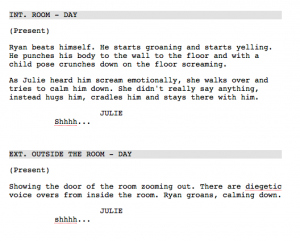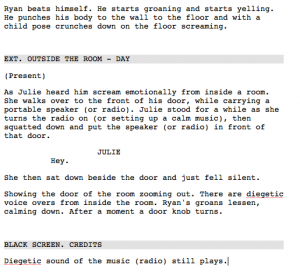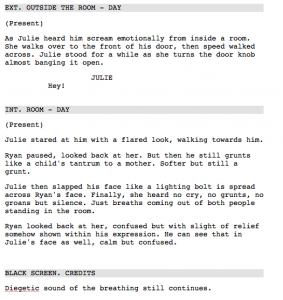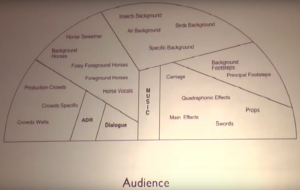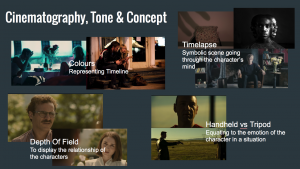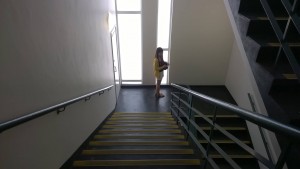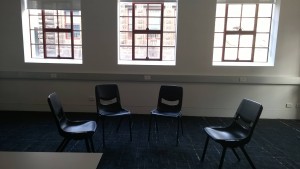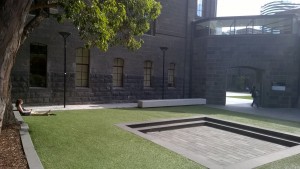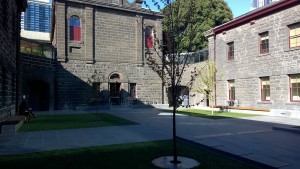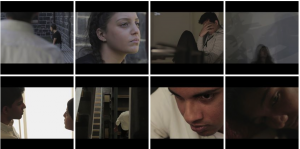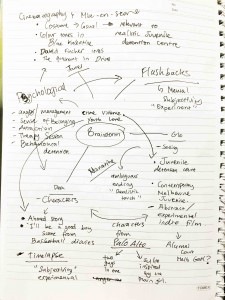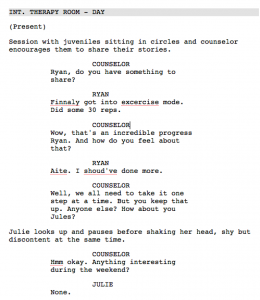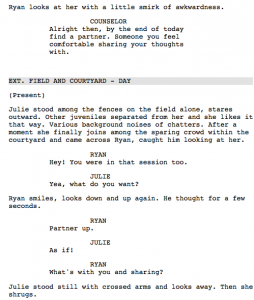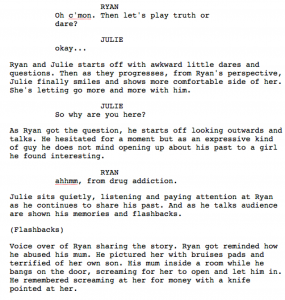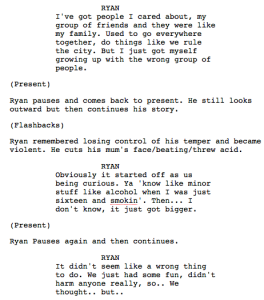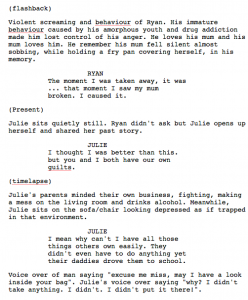.. In progress.
Starting the script with a draft is a successful practice that I have taken, seeing that it is my first time constructing a formal screenwriting skills. In the script I wrote, I have realised that it contains a dense amount of dialogue and expressive body language. Much of this action is portrayed with facial expression instead of highly active performances. I think that this form is suitable in going for a Indie style of realistic, non-exaggerated performances that we usually might have seen in mainstream films. Newman had stated that conventions of setting and human being representation on this kind of films are “typically naturalistic” (2011, 87). Likewise, we do not have exaggerated courageous or intellectual characters but rather ordinary ones representing lives of adolescents and young adults who may have suffered through past drug uses or crimes leading them into juvenile detention centre. These are realistic experiences that we human in real life is naturally a part of.
As we discussed and did some retouches on the script together, we decided to make some changes on some parts of the script. Because Dea is focusing on creating the characters, both she and I had a read-through to see if any psychological side of the characters and their behaviours are appropriate and make sense. The main adjustment that we’ve made is toward the ending of the short film.
Option 3 would be our final choice for the script narrative. James in our group thought that the ending would need to be prominent, not necessarily a final closed up resolution, but something the audience will think twice about. Plus, we wanted our film to be experimental with a rather “unfinished” ending to symbolise the true reality that our lives goes on ordinarily despite the dramas. Hence, James suggested that what if Julie slapped Ryan instead, as he lost control of his anger. I thought that it is a great unusual and unique idea, considering that Ryan is a being who has been treated without strictness or discipline by his calm “inferior” mother. After Julie’s slap, it would be a shocking and unexpected treatment for him yet also for the audience. Therefore we decided to go along with this sort of ending. I am now excited for the shooting and how the performance will come to be as well as any adjustments that might be made during the shooting.
Finally in week 9, we have officially finalised our script. There had been a couple cross outs and add ons but it seems like we are all satisfied with our screen writing end result. What we need to rely on is bring this piece out during the shooting days in which we are looking forward to in week 10.
The final script…

